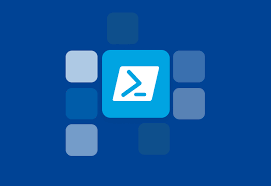PowerShell modules are self-contained units of functionality that encapsulate reusable code and resources. Modules enable you to extend PowerShell’s capabilities by providing additional cmdlets, functions, variables, and other components. Here’s an introduction to PowerShell modules:
- What is a module?
A module is a package of PowerShell scripts, cmdlets, functions, and other resources that are bundled together to provide specific functionality. It allows you to organize and distribute your code in a structured and reusable manner. - Creating a module:
To create a module, you need to create a folder with the same name as your module and place your PowerShell files inside it. The required file for a module is a PowerShell module manifest file (.psd1) that describes the contents of the module. - Module manifest:
The module manifest is a metadata file that provides information about the module. It specifies the module name, version, author, and other details. It also lists the files and resources included in the module, as well as any dependencies. - Exporting functions and cmdlets:
You can define functions and cmdlets within your module and specify which ones you want to export. Exported functions and cmdlets can be accessed and used by consumers of the module. - Importing a module:
To use a module, you need to import it into your PowerShell session. TheImport-Modulecmdlet is used to load a module and make its functions and cmdlets available for use. - Automatic module loading:
PowerShell automatically loads modules from predefined locations when you use a function or cmdlet from that module. These locations include the user’s personal module directory, the system-wide module directories, and any module directories specified in the$env:PSModulePathenvironment variable. - Finding and installing modules:
PowerShell has a built-in gallery called the PowerShell Gallery, which hosts a wide range of community-contributed modules. You can use theFind-Modulecmdlet to search for modules and theInstall-Modulecmdlet to download and install modules from the gallery. - Using a module:
Once a module is imported, you can use its functions and cmdlets just like you would with any other PowerShell cmdlets. You can call module functions, piping input through module cmdlets, and leveraging module variables. - Updating and removing modules:
You can update an installed module to a newer version using theUpdate-Modulecmdlet. To remove an installed module, you can use theRemove-Modulecmdlet.
PowerShell modules make it easier to package, distribute, and reuse PowerShell code and resources. They allow you to extend PowerShell’s functionality and improve your scripting efficiency. You can explore the PowerShell documentation or use the Get-Help cmdlet to get more information about specific module-related cmdlets and concepts.
SHARE
